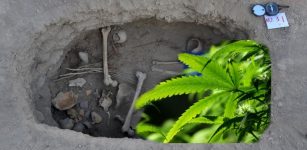Biblical Giant Body Of Water Is Mysteriously Disappearing
MessageToEagle.com – In Ezekiel 47:1-10, the prophet says that there will be a time in the future when the Dead Sea will be healed of its salty waters by a stream flowing eastward from the Temple, and that the Sea will teem with fish.
Nothing grows in the immediate area of the Dead Sea and there is no animal life but the sea has attracted visitors for thousands of years.
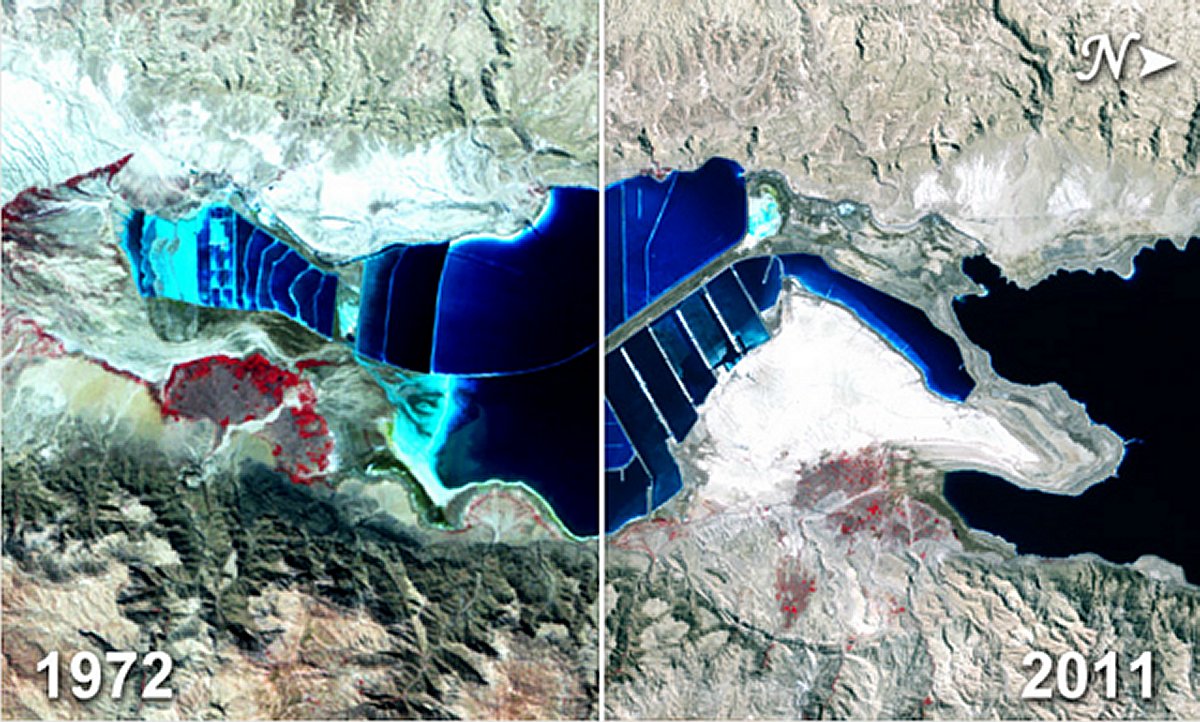
It’s a Biblical place that exists because the land has been sinking for millennia due to the continents of Africa and Asia pulling away from each other and the depression makes the lake the lowest surface feature on Earth at about 1,300 feet (nearly 400 meters) below sea level.
It contains 30 percent of sodium, magnesium, calcium and other salts, it has the highest mineral content of any body of water in the world.
The ancient Egyptians used salts from the Dead Sea for mummification, fertilizers and potash (a potassium-based salt). In the modern age, the sodium chloride and potassium salts culled from the sea are also used in part for water conditioning, road de-icing and by the chemical industry for the manufacturing of polyvinyl chloride (PVC) plastics.
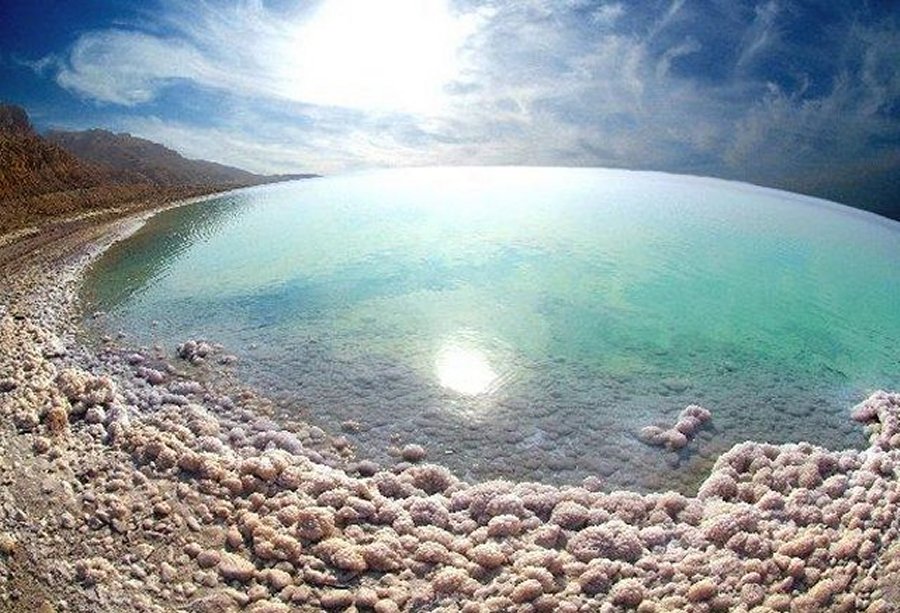
The Dead Sea, located between the Judean Hills on the west and the Hills of Moab on the east, is 48 miles long, and 11 miles at the widest point, and is fed by the Jordan River.
Research conducted by scientists from the Tel Aviv University shows that the Dead Sea almost dried up over 100,000 years ago and this rapidly dropping water levels of the Dead Sea has been a source of ecological concern for years.
Steven Goldstein, a professor at the Lamont-Doherty Earth Observatory at Columbia University and a study researcher, says that early drill cores show that the Dead Sea has already dried up at least a couple of times with no human pressure in the past couple of hundred thousand years.
“Drying up by itself means that this water resource that people depend on now basically stopped by itself. Climate models predict a greater aridity with a warmer climate,” Goldstein noted.
“Just imagine what this means if a warming climate results in the present day water supply becoming scarcer and scarcer.”
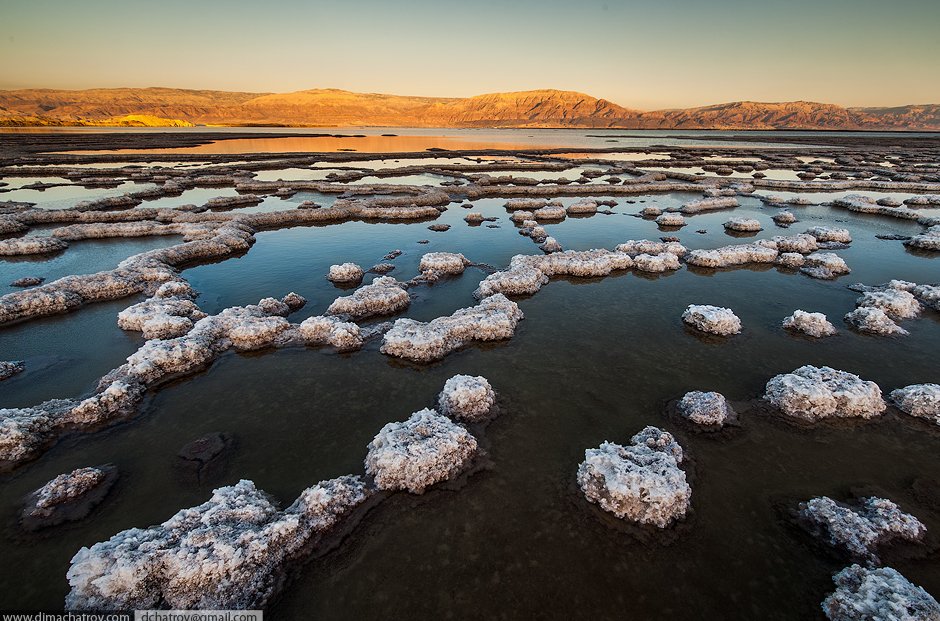
With climate change, the Dead Sea region is expected to become more arid, resulting in more pressure on water resources. And recent signs suggest things are already happening; in 1930 the lake’s surface was 1,280 feet (390 meters) below seal level, dropping to 1,381 feet (421 m) below sea level in 2008 due to water being used up by humans before it could even reach the lake, the researchers said.
Rock layers on the shore had already revealed that the lake has fluctuated in size, filling the entire Jordan Rift Valley during the last Ice Age. But the newly unearthed core showed that during the last interglacial period, about 120,000 years ago, the lake dried up, perhaps entirely. At that point, Goldstein and his colleagues found a layer of round beach pebbles on top of a 147-foot (45-m) layer of mostly salt.
“It looks like the beach deposits that we see on the shore,” Goldstein said. But this core was taken in what was then the center of the lake basin.
Apparently, the Dead Sea dried up dramatically, in the warm period before the last Ice Age and left its salt behind. That past dry-down was climate-driven,” said Zvi Ben-Avraham, chief scientist on the project and a researcher at Tel-Aviv University.”
But today the lake is threatened more directly by humans.”
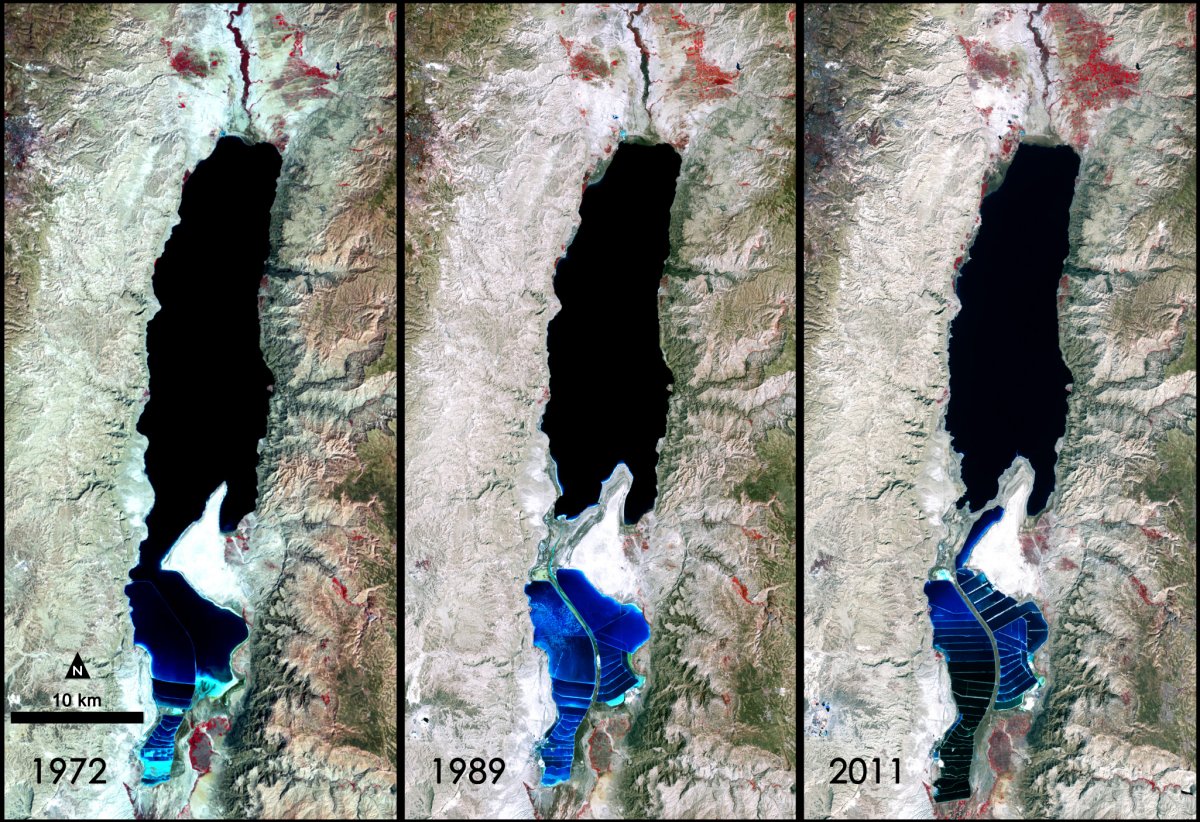
This false-color image was captured by the Landsat 1, 4 & 7 satellites. Visible is the Lisan Peninsula (bottom center) that forms a land bridge through the Dead Sea. Deep waters are dark blue, while pale blue shows salt ponds and shallow waters to the south. The pale pink and sand-colored regions are desert lands. Denser vegetation appears bright red. Credit: NASA/Landsat
Researchers drilled 460 meters beneath the sea floor and extracted sediments spanning 200,000 years. The material reveals the region’s past climatic conditions.
The Dead Sea’s water levels have risen and fallen by hundreds of meters over the last 200,000 years. During the last interglacial period, approximately 120,000 years ago, the sea came close to drying up entirely, the researchers found, with another period of extreme dryness taking place about 13,000 years ago.
But there is a difference. In the past, the Dead Sea’s problems were climate-driven – the result of natural conditions. Today, the situation seems to be different – the Biblical body of water is threatened by human activity.
Additionally, there is also a problem with the global warming, which is rather bad scenario for the Dead Sea, which is going to be even drier and warmer in the future than it is today.
Today, the Dead Sea lies 426 meters below sea level and is receding rapidly. The scientists say, this is a man-made phenomenon.
MessageToEagle.com



